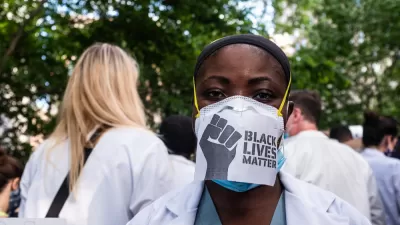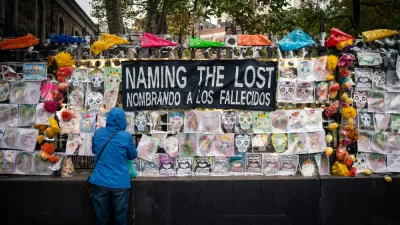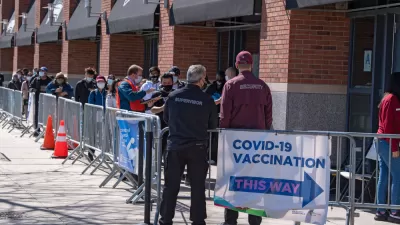If ever there was a doubt about the sheer depth and breadth of intersectionality found in the practice and theory of planning, the pandemic provides daily reminders.
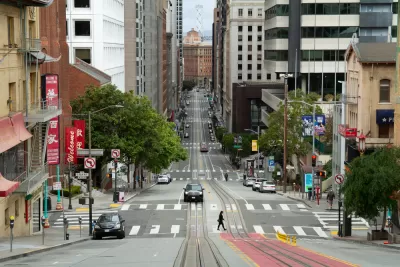
This is the second in a two-part series on the big planning stories and trends to emerge in 2020—the year that the COVID-19 pandemic forced a sudden and sweeping disruption of the patterns of daily life, and with it a confrontation with the shortcomings of planning, past and present, in addressing some of the most daunting challenges facing the world.
The first article in this series took a look at some of the most dominant themes of the discussion of planning and the pandemic—questions about density, migration, and racism. This second article in the series will look at some of the themes to emerge from the year that might have fallen through the cracks in terms of mainstream media attention and will present planners and policy makers with immediate opportunities to determine the path the country and the world will take in the new year.
Coronavirus and the Public Realm
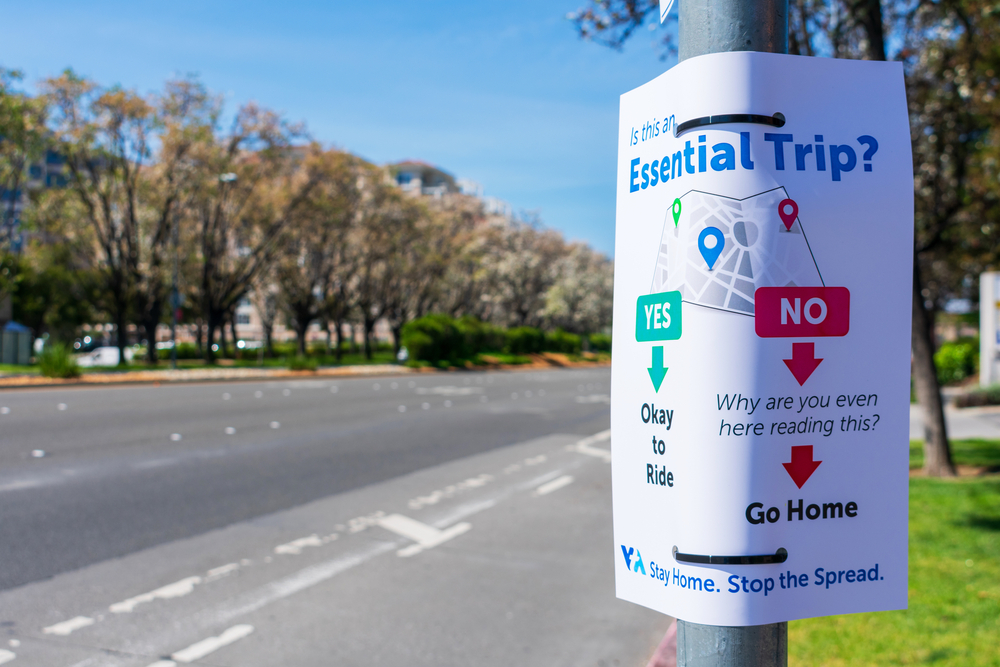
The reckoning about the racial consequences of planning, detailed in the first article in this series, wasn't the only theme from 2020 to play out in the public realm. Signs of the pandemic's disruption are visible in every corner of the public realm, but especially on the streets and in the country's collective choices about how to move around during the pandemic. Throughout the pandemic—whether we were stuck inside, working essential jobs, or pretending like the pandemic is a hoax—streets have reflected the public response to the pandemic. At the beginning of the pandemic, the shock of empty streets, clean air in Los Angeles, and clean water in Venice, made it impossible to deny the unprecedented nature of the crisis.
As the pandemic lengthened, however, some of the shine has worn from any silver lining people might have sought from streets suddenly emptied of cars. We simply don't know yet how people will get around once the economy settles into the post-pandemic reality. Will enough people work from home to offset the number of new residents in car-centric locations? Will riders return to public transit, or will those transit agencies fail under the weight of lost revenues? Will the most vulnerable participants in the economy have access to cheap, efficient transportation systems to help relieve the economic stress of the pandemic and its aftermath?
Fewer people are driving still, ten months into the pandemic, but driving has recovered faster than riding transit. More people have been dying in automobile collisions (even in Portland), upending a long-term correlation between vehicle miles traveled and traffic collision fatalities. Traffic fatalities are just one more of the many "crises within the crisis" this pandemic spreads almost as quickly as the novel coronavirus itself.
At times, it might have been possible to look at the streets and hope that the pandemic could produce a less car-centric future, but there are plenty pro-car forces working to regain the ground they've lost during the pandemic, and there are already signs of people investing in cars as the transportation mode of choice in the wake of the pandemic. Parking spots and vehicle lanes reclaimed for outdoor dining programs are having a hard time holding ground in New York City, and the city has also downsized initially ambitious plans to reconfigure numerous streets for the priority of bus transit after facing pressure from the traditional pro-car political interests. (The story on the issue of outdoor dining in places previously reserved for cars isn't totally devoted to that kind capitulation: Many cities, including New York, have converted temporary outdoor dining programs into permanent fixtures.)
An economic stimulus package recently approved by Congress and signed into law by President Donald Trump has thrown transit agencies a life raft that will last a few months, at most, so at least public transit will continue to run, offering an alternative to automobile commutes. Someday, politicians and the public will be faced with existential choices about how to prioritize transportation in the post-pandemic reality.
Investing in Automobile-Dependence
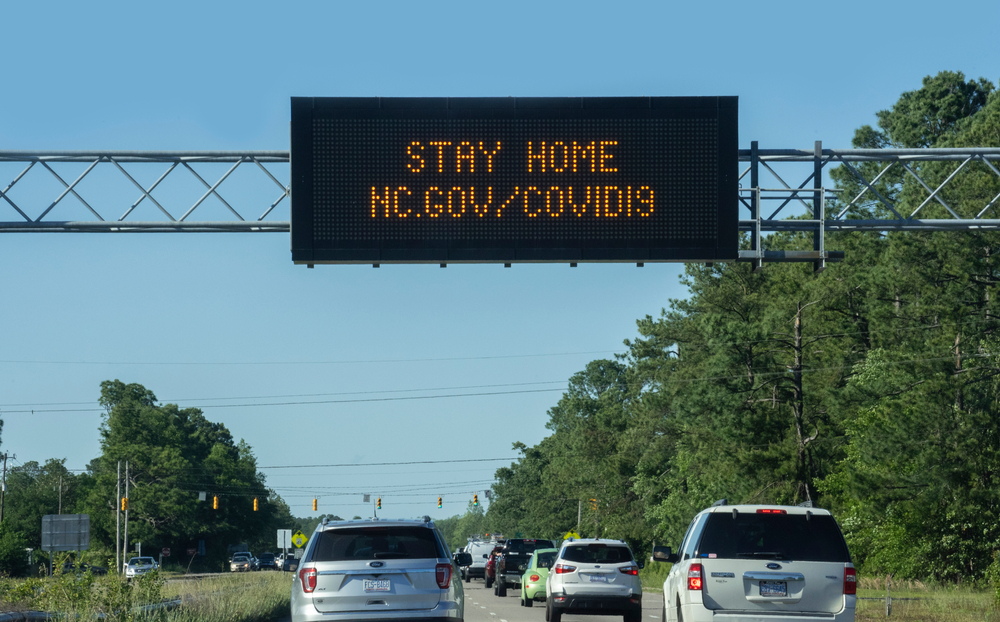
While much of the attention on the fiscal crisis resulting from the pandemic focused on transit agencies, one other fact of fiscal health has gone relatively underreported: the decline of gas tax and other tax revenues used to fund automobile transportation projects. The American Road and Transportation Builders Association estimated this summer that $8.5 billion of work in 14 states was already delayed by the loss of revenue resulting from the pandemic. Since then, revenues have started to rebound, but according to the American Association of State Highway and Transportation Officials, state DOTS are expecting a loss of $16.7 billion in 2020 and $37 billion over the next five years.
This point isn't included here to suggest that the Texas Department of Transportation, for example, is facing the same kind of existential threat as the Washington Metropolitan Area Transit Authority (again, just as an example), but the fact that the sudden decline in automobile-related revenue isn't more widely reported might indicate how thoroughly people take car-centric planning, funding, and building for granted, and that any existential threat to automobile dependence is still extremely speculative.
The aforementioned stimulus package, approved at the conclusion of 2020, included 11th hour changes that stuck a last-minute-influx of $10 billion for state departments of transportation—the result of a lobbying effort by AASHTO. The last-minute change could be a sign of spending to come.
Those who lived through the last recession know that even economic stimulus packages spearheaded by a Democratic majority in Congress can promise sustainability and equity and instead send money to highway and other car infrastructure projects that lock the economy into the same bad habits that have produced all sorts of negative externalities in the era of auto dependence. Until it proves otherwise, the federal government is much more prepared to fund a car-centric stimulus than it is to fund transit operations, social housing programs, or green energy programs.
It's happened before, and it's already happening again.
The Future of Parks
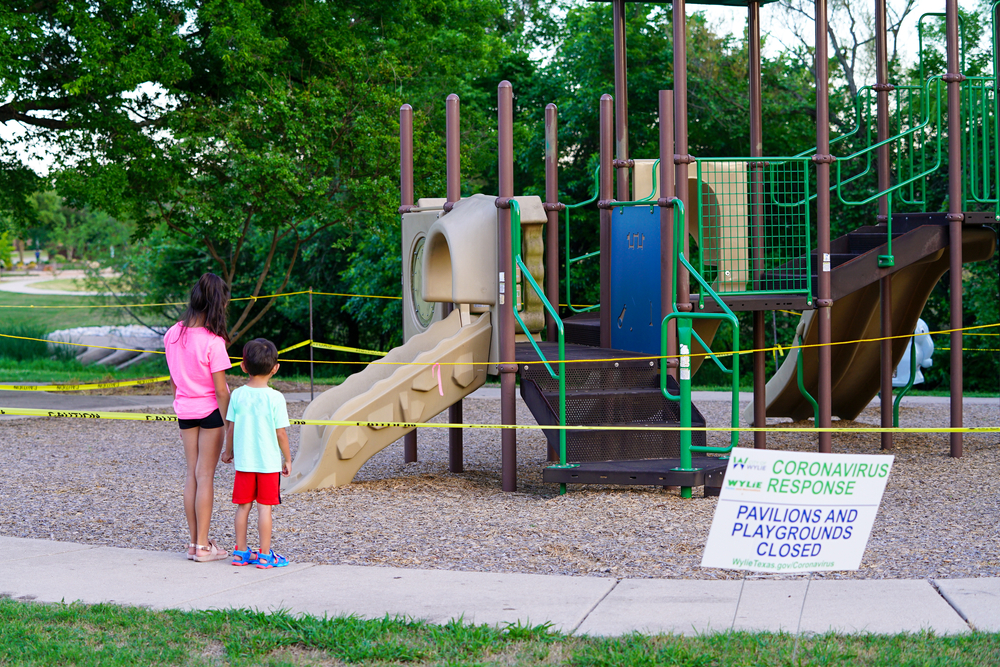
One of the earliest, most conspicuous signs of the planning policy controversies that would define 2020 was the fight over how to manage public open space and parks during the pandemic.
During the stay-at-home orders of the spring, many cities closed parks, beaches, and trails. The National Parks system was also closed. Some of the earliest public health warnings in the early pandemic chastised the public for hitting the trails or the beaches. From these prohibitions, some of the momentum for open streets and outdoor dining was born, and park planners played a major role in radical reform of how communities manage public space.
Many park systems launched new virtual tour capabilities in addition to finding numerous new ways to approach programming while maintaining the social distancing mandated by public health departments. Park planners, like their colleagues in so many branches of government, had to find new ways of engaging the public to plan new parks.
The importance of open space and parks for emotional and physical health has never been more clear as more and more Americans spend their free time exercising and recreating in parks as a replacement for normal leisure activities. Still, controversies persist about which park facilities are safe (playgrounds, for example, continue to be a hot button issue). Parks also figure into the emerging understanding at the risk factors that have exacerbated the spread of the novel coronavirus. A study from the Trust for Public Land published this summer began to build a connection between the lack of parks and open space in predominantly Black and Latino neighborhoods and the higher rates of infection in those communities, but this is another area of study to watch in the future.
In a world demanding flexibility and reform of the planning profession, park planners are on the cutting edge of the effort to rethink assumptions in light of the pandemic. An assessment of the field of planning isn't always pleasant or comfortable for those responsible for the planning decisions of the past and present, but evaluation and evolution are part of the job. Park planners offer an example of how to deliver reform despite the vagaries of politics and misinformation.
Homeless Advocates Take Direct Action
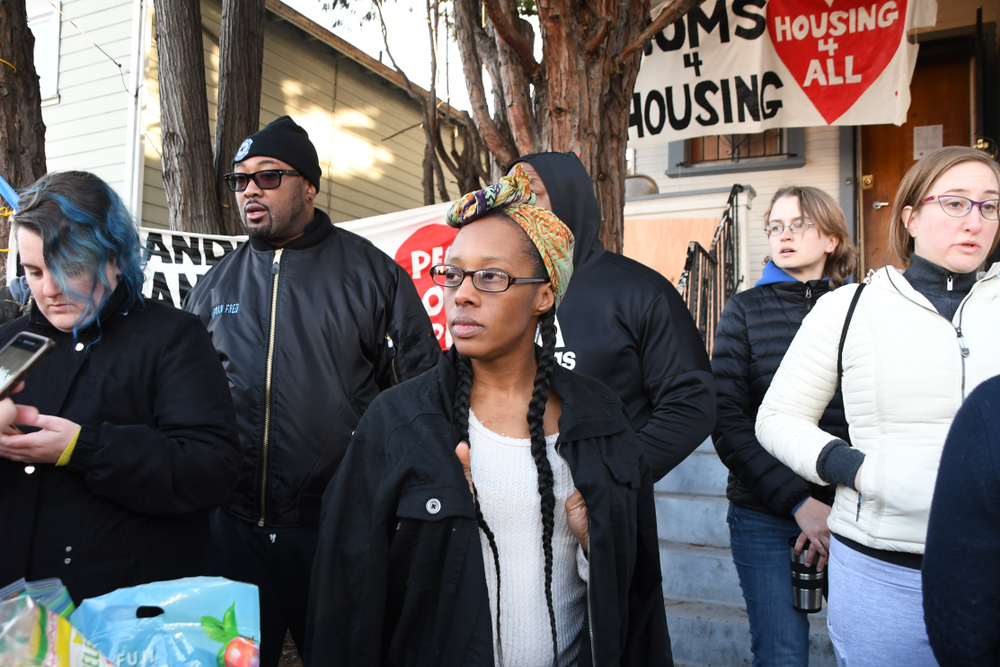
Against the background of unprecedented stress on the rental housing market and historically high numbers of unhoused people living around the country, a new housing rights movement emerged in 2020, starting with Moms 4 Housing in Oakland. The movement's actions have raised awareness about the unused resources available to provide shelter for the unhoused, and its victories have produced long-term political power.
In January 2020, the Alameda County Sheriff's Department evicted Moms 4 Housing from a house owned by Wedgewood LLC, a large, national real estate speculator, at 2928 Magnolia Street in West Oakland. Members of the group had been occupying the house since November to raise awareness about the city's housing crisis and force the issue of housing as a human right. Moms 4 Housing chose the site of the action well—the house on Magnolia Street and the neighborhood where it's found embody the racist foundations of the housing crisis.
While the story of the house and West Oakland, or some version of it, was likely not new to many people, the direct action of Moms 4 Housing, the awareness they've raised, and the growth of the movement they've created are new.
As noted in an article by Rachel Hahn, the movement created by Moms 4 Housing has taken on a new significance during the COVD-19 pandemic, and groups around the country are following in the footsteps of Moms 4 Housing by occupying vacant houses—in Southern California, the vacant houses occupied temporarily this year by Reclaiming Our Homes were owned by Caltrans, so it's not just corporations holding vacant properties while people live on the streets. In Philadelphia, the group Occupy PHA took over 15 vacant city-owned homes. In September, the city agreed to give 50 vacant homes to a community land trust created by Philadelphia Housing Action.
The latest sign of the political traction achieved by the actions of Mom 4 Housing and other organizations came in the November election, when two of the leaders of Mom 4 Housing won local elections in Oakland and Berkeley.
Conclusion
This series started with the admission that I, like most Americans, missed the threat posed by the pandemic at the beginning of 2020. An article titled "Cancel Everything," by Yascha Mounk woke me about the scale of the crisis that would occupy every conscious and subconscious thought since. Many people in this country and this world never had that moment, and those people seem to have the reins in this crisis, despite the best efforts and exhausting work by the rest of us and despite the results of the presidential election in November 2020. At this point, we don't have to be right about the specific threat coming down the pipe of history to know that society and the economy are too fragile to handle the stress.
The desire to find a silver lining in this crisis has motivated much of the discussion of this pandemic, but perhaps the biggest possible benefit of overcoming this crisis might be finding the capability to overcome the crises that surely await in the remaining decades of this century. It's impossible to dismiss the intersecting nature of the crises that challenged the country in 2020. The United States and the world might eventually overcome the public health crisis of the novel coronavirus, but the rot of racism, the terrible toll of pollution and greenhouse gas emissions, and the undemocratic realities of the housing market will still be there, ready to exacerbate every crisis that follows.
"Cancel Everything" might have been the warning for the beginning of 2020, but now the rallying cry should read something more like "Challenge Everything."

Trump Administration Could Effectively End Housing Voucher Program
Federal officials are eyeing major cuts to the Section 8 program that helps millions of low-income households pay rent.

Planetizen Federal Action Tracker
A weekly monitor of how Trump’s orders and actions are impacting planners and planning in America.

Ken Jennings Launches Transit Web Series
The Jeopardy champ wants you to ride public transit.

Washington Legislature Passes Rent Increase Cap
A bill that caps rent increases at 7 percent plus inflation is headed to the governor’s desk.

From Planning to Action: How LA County Is Rethinking Climate Resilience
Chief Sustainability Officer Rita Kampalath outlines the County’s shift from planning to implementation in its climate resilience efforts, emphasizing cross-departmental coordination, updated recovery strategies, and the need for flexible funding.

New Mexico Aging Department Commits to Helping Seniors Age ‘In Place’ and ‘Autonomously’ in New Draft Plan
As New Mexico’s population of seniors continues to grow, the state’s aging department is proposing expanded initiatives to help seniors maintain their autonomy while also supporting family caregivers.
Urban Design for Planners 1: Software Tools
This six-course series explores essential urban design concepts using open source software and equips planners with the tools they need to participate fully in the urban design process.
Planning for Universal Design
Learn the tools for implementing Universal Design in planning regulations.
Heyer Gruel & Associates PA
Ada County Highway District
Institute for Housing and Urban Development Studies (IHS)
City of Grandview
Harvard GSD Executive Education
Toledo-Lucas County Plan Commissions
Salt Lake City
NYU Wagner Graduate School of Public Service


























